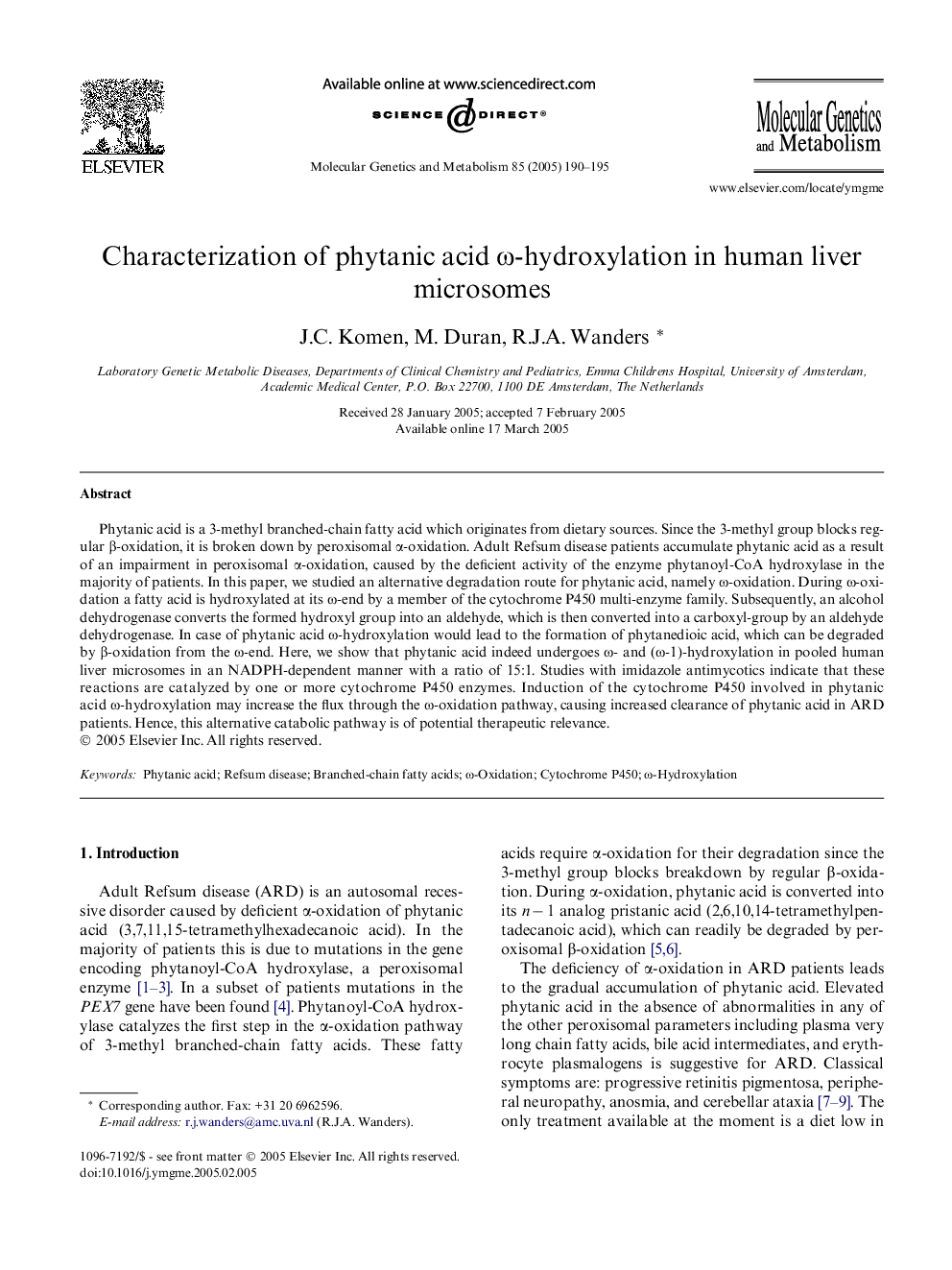| Article ID | Journal | Published Year | Pages | File Type |
|---|---|---|---|---|
| 10834886 | Molecular Genetics and Metabolism | 2005 | 6 Pages |
Abstract
Phytanic acid is a 3-methyl branched-chain fatty acid which originates from dietary sources. Since the 3-methyl group blocks regular β-oxidation, it is broken down by peroxisomal α-oxidation. Adult Refsum disease patients accumulate phytanic acid as a result of an impairment in peroxisomal α-oxidation, caused by the deficient activity of the enzyme phytanoyl-CoA hydroxylase in the majority of patients. In this paper, we studied an alternative degradation route for phytanic acid, namely Ï-oxidation. During Ï-oxidation a fatty acid is hydroxylated at its Ï-end by a member of the cytochrome P450 multi-enzyme family. Subsequently, an alcohol dehydrogenase converts the formed hydroxyl group into an aldehyde, which is then converted into a carboxyl-group by an aldehyde dehydrogenase. In case of phytanic acid Ï-hydroxylation would lead to the formation of phytanedioic acid, which can be degraded by β-oxidation from the Ï-end. Here, we show that phytanic acid indeed undergoes Ï- and (Ï-1)-hydroxylation in pooled human liver microsomes in an NADPH-dependent manner with a ratio of 15:1. Studies with imidazole antimycotics indicate that these reactions are catalyzed by one or more cytochrome P450 enzymes. Induction of the cytochrome P450 involved in phytanic acid Ï-hydroxylation may increase the flux through the Ï-oxidation pathway, causing increased clearance of phytanic acid in ARD patients. Hence, this alternative catabolic pathway is of potential therapeutic relevance.
Keywords
Related Topics
Life Sciences
Biochemistry, Genetics and Molecular Biology
Biochemistry
Authors
J.C. Komen, M. Duran, R.J.A. Wanders,
